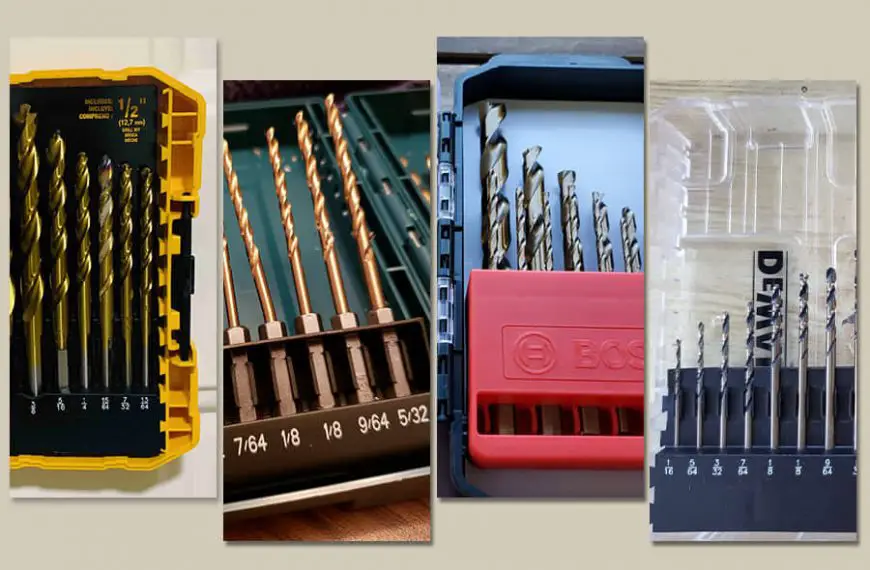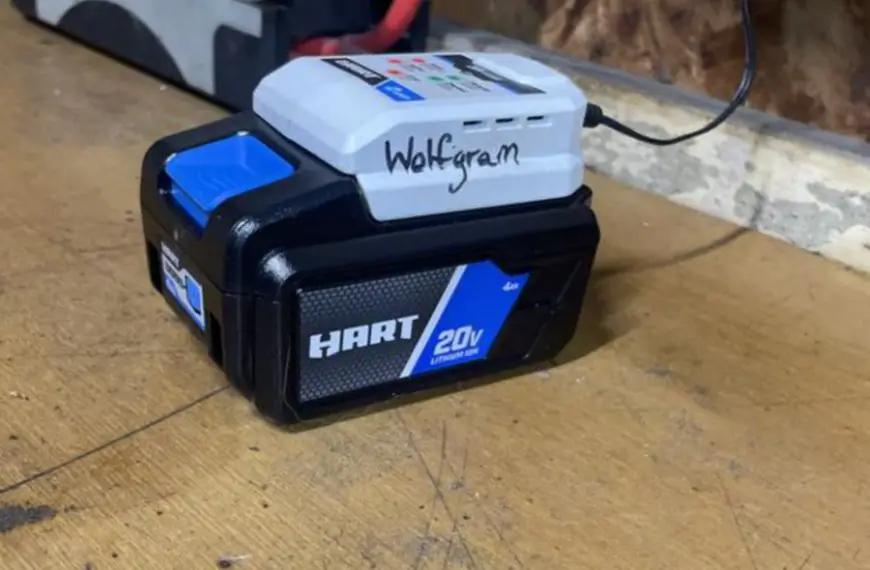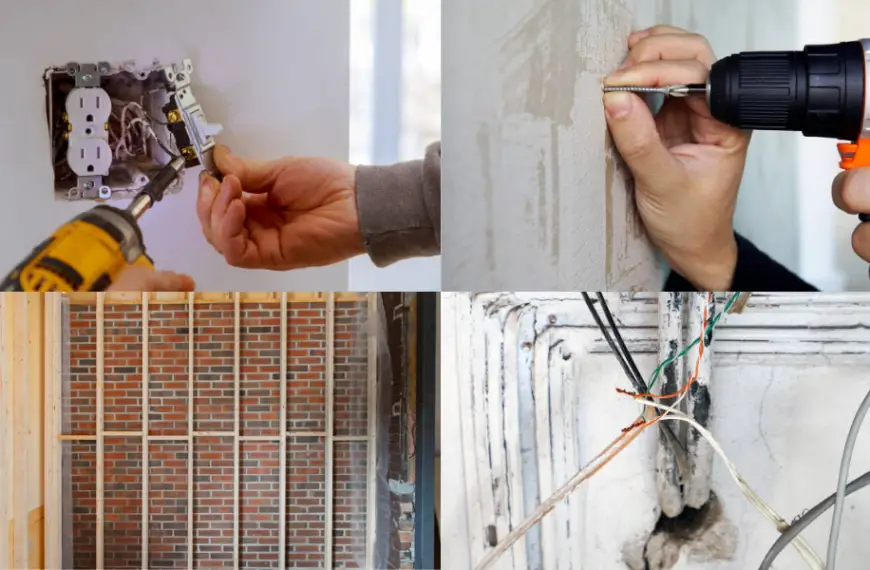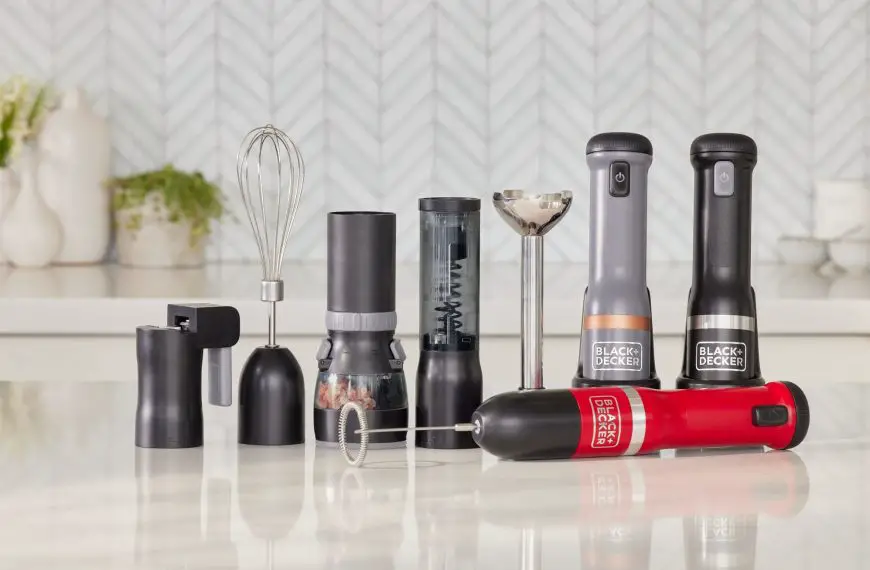There are some significant differences between Ryobi 6-1/2 vs 7-1/4 circular saw. I will discuss these differences in detail in this blog post. Familiarizing yourself with Ryobi’s current models in these sizes is crucial. As such, I will highlight the differences in each model to aid in your decision-making.
Note: Only the Ryobi Cordless circular saw is discussed in this blog post.
Disclaimer: Models & prices are written at the time of writing this blog post.
Ryobi 6-1/2″ Circular Saw
- RYOBI 18V ONE+ 6-1/2 in. Circular Saw (P507)
- RYOBI 18V ONE+ HP Compact Brushless 6-1/2″ Circular Saw (PSBCS01B).
Ryobi 7-1/4″ Circular Saw
Ryobi has only one model in a 7-1/4″ circular saw, which is Ryobi 18V ONE+ HP Brushless 7-1/4″ Circular Saw (PBLCS300B).
Main Differences Ryobi 6-1/2 vs 7-1/4 Circular Saw
The main differences between Ryobi 6-1/2 vs 7-1/4 Circular Saw are as follows.
- Main Differences Ryobi 6-1/2 vs 7-1/4 Circular Saw
- 1. Blade Orientation of Ryobi 6-1/2 vs 7-1/4 Circular Saw
- 2. Depth of cut of Ryobi 6-1/2 vs 7-1/4 Circular Saw
- 3. Size/Dimension of Ryobi 6-1/2 vs 7-1/4 Circular Saw
- 4. Bevel Capacity of Ryobi 6-1/2 vs 7-1/4 Circular Saw
- 5. Dust Port attachments of Ryobi 6-1/2 vs 7-1/4 Circular Saw
- 6. Recommended Batteries of Ryobi 6-1/2 vs 7-1/4 Circular Saw
- 7. Weight of Ryobi 6-1/2 vs 7-1/4 Circular Saw
- 8. No Load RPM of Ryobi 6-1/2 vs 7-1/4 Circular Saw
- 9. Rafter Hook of Ryobi 6-1/2 vs 7-1/4 Circular Saw
- 10. Price of Ryobi 6-1/2 vs 7-1/4 Circular Saw
- Summary
1. Blade Orientation of Ryobi 6-1/2 vs 7-1/4 Circular Saw
The blade orientation in circular saws is a crucial factor that many people consider. The Ryobi 6-1/2″ circular saw, available in both models, features a blade left orientation. On the other hand, all models of the Ryobi 7-1/4″ circular saw come with a right side blade orientation.
| Saw Size | Blade Orientation |
|---|---|
| 6-1/2″ (All Models) | Left Side |
| 7-1/4″ (PBLCS300B) | Right-Side |
2. Depth of cut of Ryobi 6-1/2 vs 7-1/4 Circular Saw
The depth of cut in a saw refers to the maximum depth it can cut through a material in a single pass. Based on the blade diameter, it is evident that a 6-1/2 inch circular saw will have a shallower cut compared to a 7-1/4 inch circular saw. The specific depth values for both sizes of saws are presented in the table below.
| Saw Size | Depth of Cut at 90°/0° | Depth of Cut at 45° |
|---|---|---|
| 6-1/2″ (both models) | 2-1/4″ | 1-9/16″ |
| 7-1/4″ (PBLCS300B) | 2-7/16“ | 1-3/4″ |
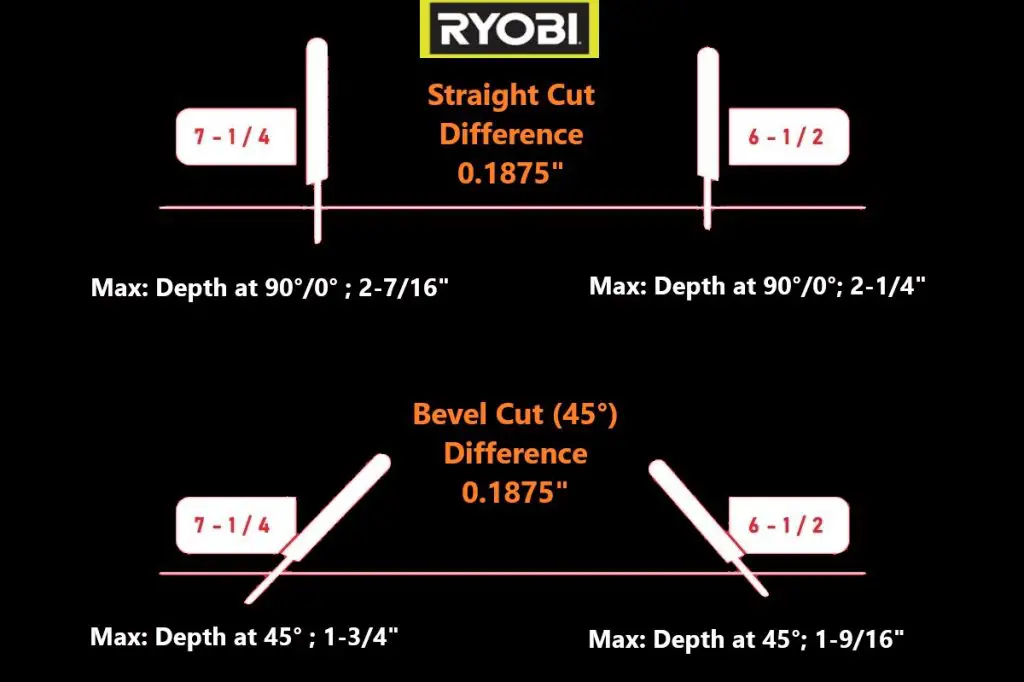
3. Size/Dimension of Ryobi 6-1/2 vs 7-1/4 Circular Saw
The Ryobi 6-1/2 inch circular saw boasts a more compact design than the 7-1/4 inch saw due to its smaller blade size. The dimensions of both size saws (each model) are presented in the table below.
| Saw Size & Model No. | Dimension in inches (L x W x H) |
|---|---|
| 6-1/2-Inch (P507) | 11 x 6 x 8 |
| 6-1/2-Inch (PSBCS01B) | 12.25 x 6 x 8.5 |
| 7-1/4-Inch (PBLCS300B) | 13 x 6.5 x 8 |
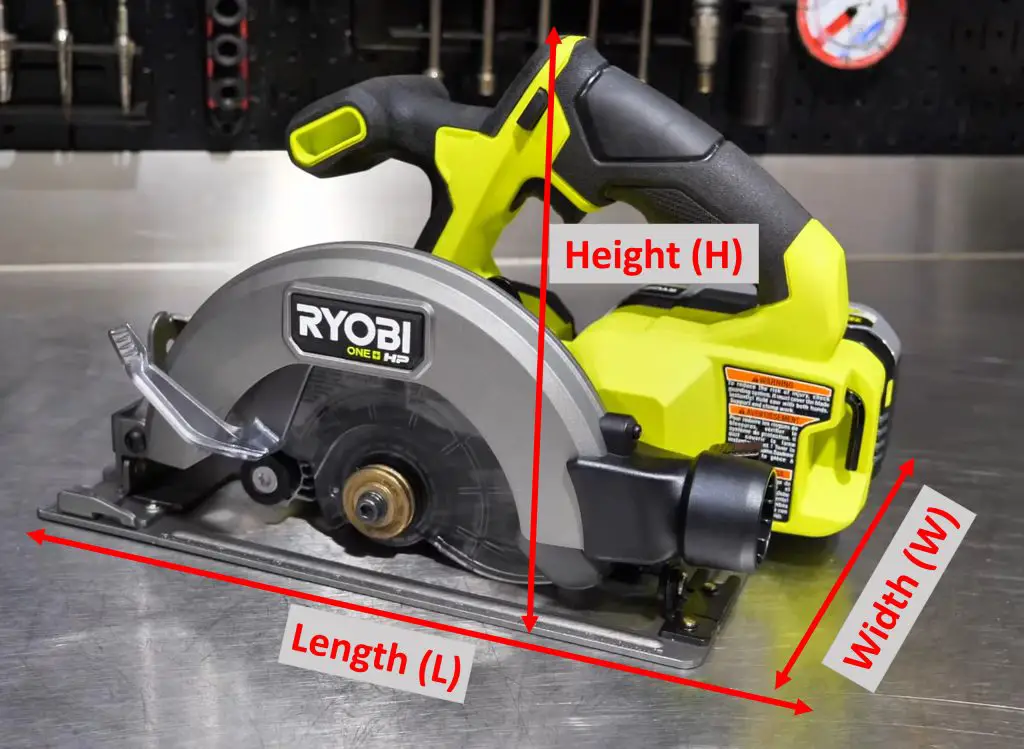
4. Bevel Capacity of Ryobi 6-1/2 vs 7-1/4 Circular Saw
| Saw Size & Model No. | Bevel Capacity |
|---|---|
| 6-1/2-Inch (P507) | 0-56° |
| 6-1/2-Inch (PSBCS01B) | 0-50° |
| 7-1/4-Inch (PBLCS300B) | 0-56° |
5. Dust Port attachments of Ryobi 6-1/2 vs 7-1/4 Circular Saw
A dust port in a circular saw is highly beneficial, especially when working in confined areas. These ports can be connected to a vacuum adapter, with dust-free air, and save time cleaning.
| Saw Size & Model No. | Dust Port Option |
|---|---|
| 6-1/2-Inch (P507) | NO |
| 6-1/2-Inch (PSBCS01B) | YES |
| 7-1/4-Inch (PBLCS300B) | YES |
Ryobi 7-1/4″ (PBLCS300B) circular saw may not be as effective as expected even with a vacuum adapter, making it not the best option if you work in an environment where dust particles are unwanted.
6. Recommended Batteries of Ryobi 6-1/2 vs 7-1/4 Circular Saw
Ryobi’s batteries are interchangeable (Provided the voltage is the same), which means you can use a Ryobi One+ battery on standard Ryobi saws and tools in general, and a standard Ryobi battery can be used in the HP One+ Ryobi series.
It is possible to use a smaller battery with a lower amp-hour (2Ah) on a larger saw like the 7-1/4″. However, since the saw requires more power, it may drain the battery faster, and you may need to recharge it more frequently. On the other hand, a larger battery with a higher amp-hour (4Ah) can be used on a smaller saw without any issues.
However, to get optimal performance of the One+ HP series, the One+ HP battery is recommended.
| Saw Size (Model No.) | Battery (Recommended) | Estimated Run Time |
|---|---|---|
| 6-1/2-Inch (P507) | 2 Ah | ~ 45 minutes |
| 6-1/2-Inch (PSBCS01B) | 2 Ah | ~ 45 minutes |
| 7-1/4-Inch (PBLCS300B) | 4Ah / 6Ah /9Ah | ~ 70 minutes |
7. Weight of Ryobi 6-1/2 vs 7-1/4 Circular Saw
The weight of cordless tools is a crucial consideration. A lighter tool means greater portability and ease of carrying it wherever you go. Lightweight tools also offer better control, resulting in increased precision during use.
Each model’s weight (without battery) is specified in the table below.
| Saw Size & Model No. | *Weight in Pounds |
|---|---|
| 6-1/2-Inch (P507) | 5.0 |
| 6-1/2-Inch (PSBCS01B) | 5.5 |
| 7-1/4-Inch (PBLCS300B) | 6.6 |
8. No Load RPM of Ryobi 6-1/2 vs 7-1/4 Circular Saw
The speed of the motor, measured in revolutions per minute (RPM), determines how many times the motor can rotate the blade in one minute with the given battery output. A higher RPM equates to a greater material removal rate from the workpiece.
RPM values are summarized in the below table for each model.
| Saw Size & Model No. | RPM/Speed |
|---|---|
| 6-1/2-Inch (P507) | 4700 RPM |
| 6-1/2-Inch (PSBCS01B) | 4900 RPM |
| 7-1/4-Inch (PBLCS300B) | 4300 RPM |
9. Rafter Hook of Ryobi 6-1/2 vs 7-1/4 Circular Saw
A rafter hook can be helpful when working on a job site, as it allows for easy hanging of the tool. None of the Ryobi circular saws has a rafter hook.
| Saw Size & Model No. | Rafter Hook |
|---|---|
| 6-1/2-Inch (P507) | No |
| 6-1/2-Inch (PSBCS01B) | No |
| 7-1/4-Inch (PBLCS300B) | No |
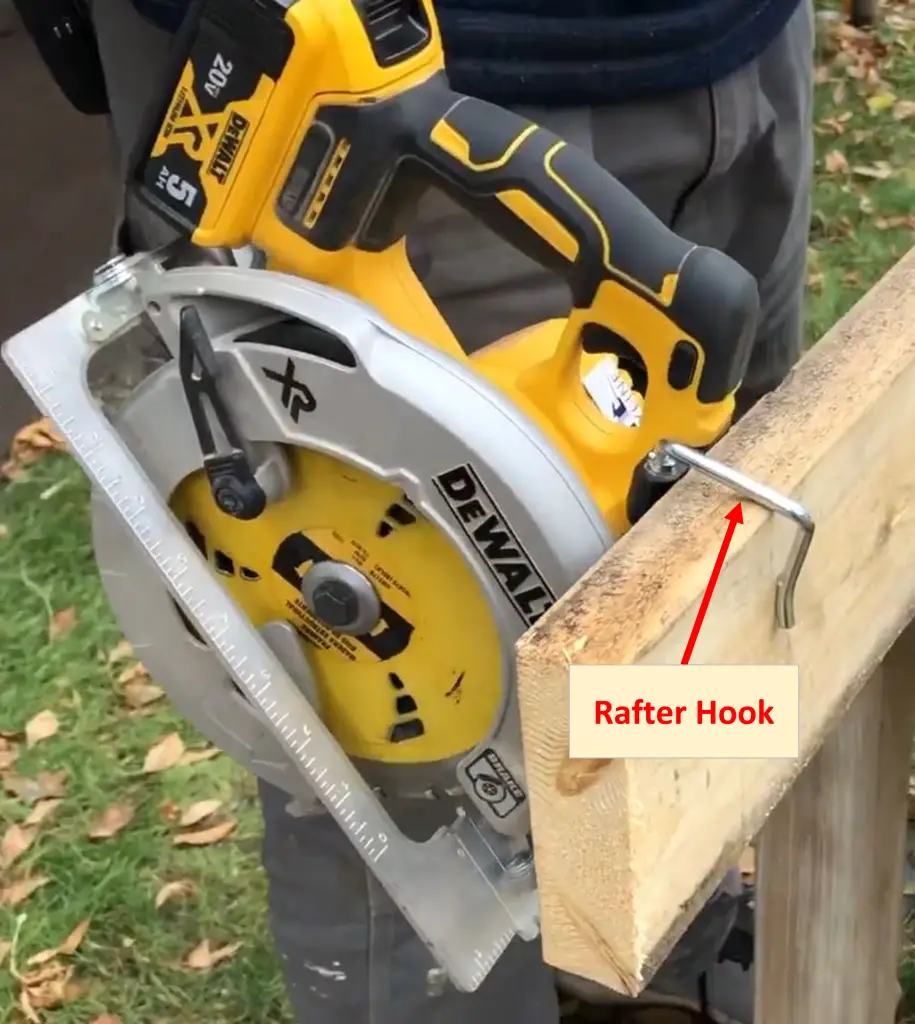
10. Price of Ryobi 6-1/2 vs 7-1/4 Circular Saw
The table below shows the prices for each model. Note that these prices are for bare tools, which means they do not include a battery or charger, but a blade is included in these prices.
| Saw Size & Model No. | *Approx: Price |
|---|---|
| 6-1/2-Inch (P507) | 79 $ |
| 6-1/2-Inch (PSBCS01B) | 119 $ |
| 7-1/4-Inch (PBLCS300B) | 129 $ |
Summary
Choosing a cordless circular saw can be challenging, especially for first-time buyers. With so many brands and sizes available in the market, it can be overwhelming to decide. However, Ryobi has a strong reputation for its cordless tools as far as DIYIER & initial pro are concerned, and its circular saws are no exception.
If you work on a daily basis & you’re a pro, Milwaukee and Dewalt are good options to consider, but they are expensive brands. You may want to review the pros and cons of these brands in this size category before making a decision. Milwaukee and Dewalt offer high-quality tools, so it’s important to weigh the costs and benefits before purchasing.
Your preference is key when choosing between the Ryobi 7-1/4″ and 6-1/2″ circular saws. For instance, if you prefer a blade right circular saw, go for the Ryobi 7-1/4″ model. If you are working with a tight budget, the Ryobi 6-1/2″ circular saw may be the better choice.
To make the selection process easier, list your requirements and compare them with the above features.
As a DIYIER, I prefer the Ryobi PSBCS01B Ryobi 6-1/2″ circular saw model because of its compactness, lightweight and advanced electronics. Although it’s not as powerful as the Ryobi 7-1/4″ (PBLCS300B) circular saw, But it is certainly worth its price.
